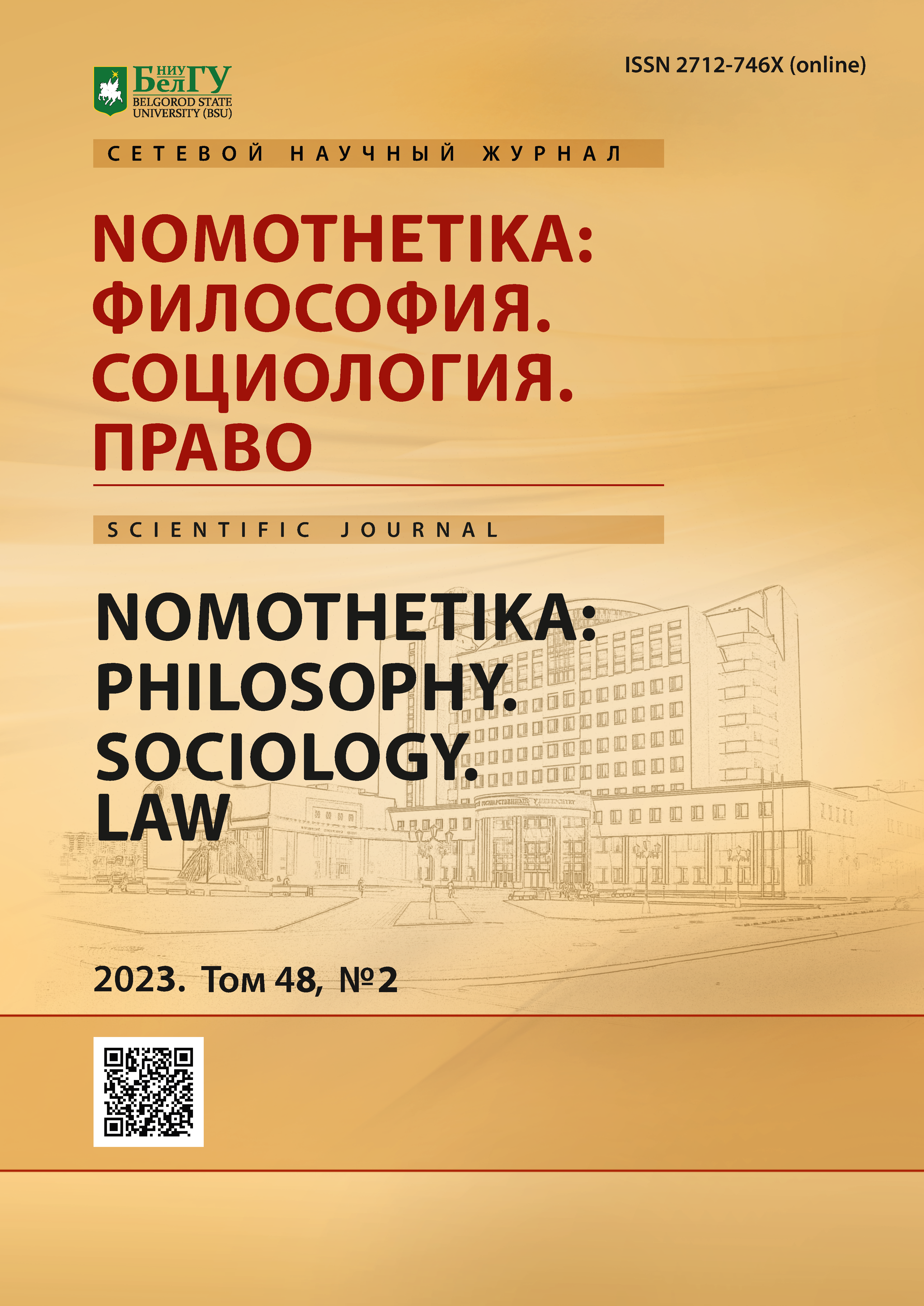Methodology for the Study of Legal Anomie
DOI:
https://doi.org/10.52575/2712-746X-2023-48-2-228-234Keywords:
legal anomie, normlessness, deviant behavior, nihilism, society, stateAbstract
In the modern period, the attention of researchers to anomie has increased as a phenomenon that causes a negative attitude of the public towards social and legal phenomena, including law and order. Legal anomie, being a kind of social anomie, has been insufficiently studied in the framework of legal research, which substantiates the relevance of the topic of this article. To develop an effective strategy and apply specific measures to combat legal anomie, it is required to study it in depth using various methods of cognition. The purpose of the article is to establish the specific reasons for the development of legal anomie in society and to determine its structural components. The article shows a different understanding of anomie and the evolution of ideas about it, taking into account a specific historical era. The interrelation of social, political and legal anomie is analyzed. The systemic nature of the phenomenon under consideration is substantiated. Structural elements of legal anomia and features of their functioning are determined. Statistical information is given, showing cause-and-effect relationships in the development of anomie in Russian society. The conclusion is made about the need for further study of anomie and the development of new techniques and methods of combating such a destructive phenomenon.
Acknowledgements
The study was carried out at the expense of the grant of the Russian Science Foundation No. 23-28-00176 (https://rscf.ru/project/23-28-00176/)
Downloads
References
Дюркгейм Э. 1996. О разделении общественного труда. М., Канон, 432 с.
Заячковский О.А. 2010. Проблемы правовой социализации в условиях аномии российского общества. Вестник Балтийского федерального университета им. И. Канта, 9: 15–27.
Кривошеев В.В., Кочергин Д.Ю. 2022. Развитие концепции аномии: специфика социальной паталогии в обществе травмы. Социальная компетентность, 4: 334–343.
Кудрявцев В.Н. 2002 Преступность и нравы переходного общества. М.: Гардарики, 238 с.
Малинина К.О. 2013. Механизм формирования социальной аномии. Национальная безопасность / Nota Bene, 6: 134–143.
Пахтусов С.С., Сорокин И.В. 2011. Системный анализ политической аномии в России. Актуальные проблемы гуманитарных и естественных наук, 9: 248–252.
Плетнев А.В. 2012. Динамика выхода современного российского общества из состояния аномии. Автореф. … дисс. канд. социологич. наук. СПб., 27 с.
Хаирова С.И. 2016. Нормы и аномия в полиэтническом обществе. В кн.: Межкультурные взаимодействия в поликультурном обществе. под ред. А.И. Лучинкиной. Симферополь. Изд. ИП Хотеева Л.В.: 63–79.
Явич Л.С. 1976. Общая теория права. Л.: Изд-во Ленингр. ун-та, 285 с.
Agnew R. 1992. Foundation for a general strain theory of crime and delinquency. Criminology, 30(1): 47–87.
Cao L., Zhao R., Ren L., Zhao J. 2010. Social Support and Anomie A Multilevel Analysis of Anomie in Europe and North America. International Journal of Offender Therapy and Comparative Criminology, 54(4): 625–639.
Orru M. 1989. Weber on Anomie. Sociological Forum, 4(2): 263-270.
Wilson J.Q., Kelling G.L. 1982. Broken Windows. The Atlantic Monthly, 249(3): 29–36.
Abstract views: 154
Share
Published
How to Cite
Issue
Section
Copyright (c) 2023 NOMOTHETIKA: Philosophy. Sociology. Law

This work is licensed under a Creative Commons Attribution 4.0 International License.


